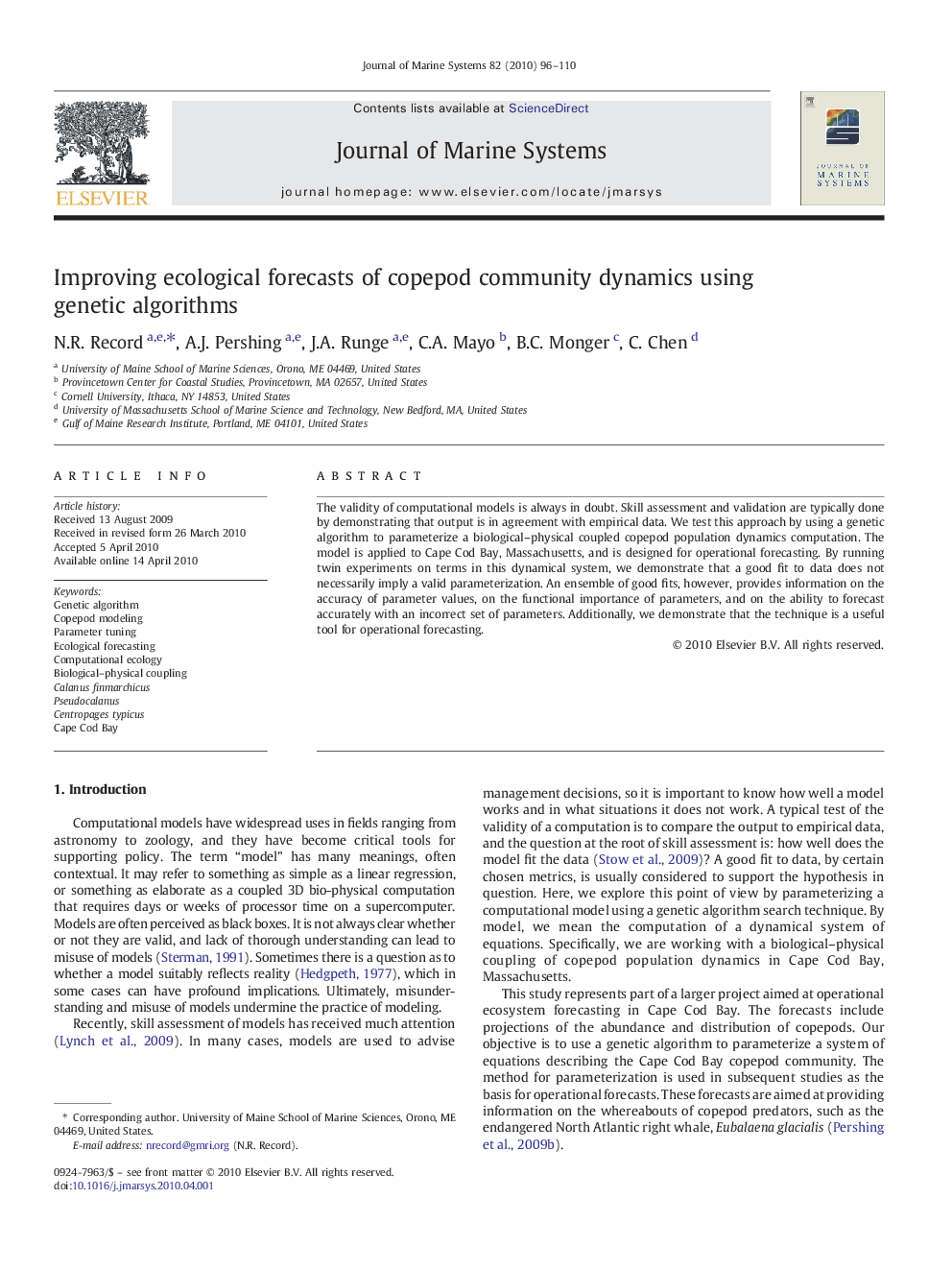| Article ID | Journal | Published Year | Pages | File Type |
|---|---|---|---|---|
| 4548463 | Journal of Marine Systems | 2010 | 15 Pages |
The validity of computational models is always in doubt. Skill assessment and validation are typically done by demonstrating that output is in agreement with empirical data. We test this approach by using a genetic algorithm to parameterize a biological–physical coupled copepod population dynamics computation. The model is applied to Cape Cod Bay, Massachusetts, and is designed for operational forecasting. By running twin experiments on terms in this dynamical system, we demonstrate that a good fit to data does not necessarily imply a valid parameterization. An ensemble of good fits, however, provides information on the accuracy of parameter values, on the functional importance of parameters, and on the ability to forecast accurately with an incorrect set of parameters. Additionally, we demonstrate that the technique is a useful tool for operational forecasting.
